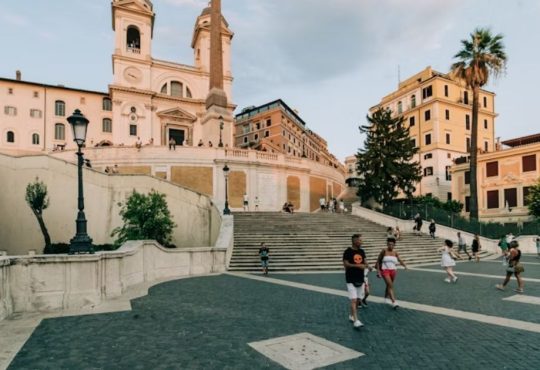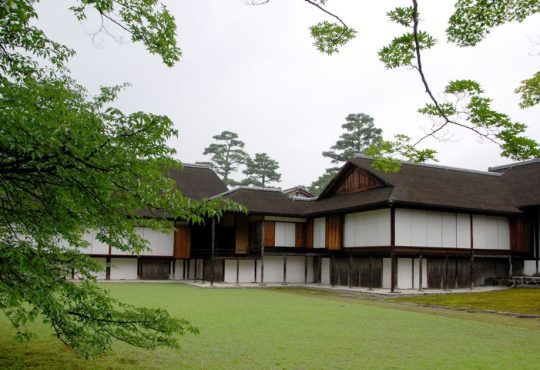Traveling is one of life’s greatest joys, offering the chance to immerse yourself in new cultures, marvel at breathtaking landscapes, and create unforgettable memories. A well-planned travel itinerary, however, is the cornerstone of a smooth and enriching adventure. It helps you make the most of your trip, stay within budget, and sidestep unnecessary stress. Discover how travel itineraries can elevate your 2025 adventures—plan your perfect getaway today!
The Importance of Travel Itineraries
Spontaneity can be exciting when traveling, but a thoughtful itinerary is your guiding light. It’s not just about having a schedule; it’s about creating a framework that transforms chaos into a seamless adventure. Here’s why it matters:
- Saves Time and Effort: A detailed itinerary helps you efficiently manage your time, ensuring you don’t waste hours figuring out what to do next.
- Reduces Stress and Anxiety: Knowing what to expect and being prepared can significantly improve your travel experience.
- Maximize Your Budget: By planning, you can allocate resources wisely and avoid overspending.
- Enhances Your Experience: A structured plan ensures you see the sights and engage in activities that truly matter to you.
A well-crafted itinerary prevents overwhelm, reduces potential roadblocks, and allows you to enjoy your trip to the fullest.
Core Elements of a Successful Itinerary
1. Destination Selection
Choosing the right destination is fundamental to a successful trip, setting the tone for your entire experience. Begin by considering your interests—whether you’re an adrenaline junkie seeking adventure, a foodie eager for culinary delights, or someone craving a tranquil escape. Research thoroughly to find destinations that align with these preferences. Adventure seekers might lean towards mountainous terrains, while culture enthusiasts could opt for historical cities. Understanding your goals will help you pinpoint locations that resonate with your desires.
Your budget is equally critical when narrowing down potential destinations. Don’t equate affordability with lackluster experiences; many budget-friendly spots offer unforgettable memories: research accommodations, transportation, and activities to determine which locations are financially feasible. Seasonal factors also play a significant role; traveling during off-peak times can save money and reduce crowds. Additionally, exploring unconventional methods like finding the cheapest flights to unknown locations might lead to surprising and rewarding adventures.
2. Create a Rough Structure
A well-organized trip structure prevents overwhelm and ensures a smooth experience. Begin by dividing your trip into segments: travel, sightseeing, meals, and relaxation. This ensures you cover all the essentials without feeling rushed. A rough structure should also accommodate priorities like key attractions and rest periods. Flexibility within your plan is essential to handle unexpected changes or delays.
Avoid overloading your itinerary, as cramming too much into one day can lead to exhaustion. Instead, focus on quality over quantity by selecting a few meaningful activities daily. Allocate time for spontaneous exploration to embrace the essence of travel—discovery. Ensure a balance between structured plans and free time, allowing you to relax and immerse yourself in the destination’s culture. A rough structure acts as a guide, but its success lies in its adaptability.
3. Identify Key Attractions & Activities
The attractions and activities you choose define your travel experience. While iconic landmarks are often must-sees, don’t overlook lesser-known gems that offer unique perspectives of the destination: research local festivals, hidden spots, and offbeat adventures to craft a more personalized itinerary. Local insights can be invaluable—talking to residents or joining guided tours often leads to discovering places not listed in guidebooks. Incorporating such activities ensures a richer and more authentic experience.
Consider interactive or immersive activities like volunteering or participating in cultural workshops. These provide deeper connections with the locale and leave you with stories and skills to cherish. Diversifying your itinerary with a mix of sightseeing, cultural immersion, and relaxation ensures a fulfilling trip. Prioritize activities that align with your interests to make every moment meaningful. Ultimately, what you see and do should reflect the essence of the place and your travel aspirations.
4. Plan Transportation & Accommodation
Transportation and accommodation are critical elements that can make or break your trip. Start by researching different modes of transport—whether flights, trains, buses, or car rentals—to identify the most convenient and budget-friendly options. Factor in travel time and comfort to avoid exhausting journeys interrupting your exploration time. Early booking saves money, especially during peak seasons, and ensures availability. Proper planning here reduces stress and keeps your trip on track.
Regarding accommodation, consider various options, including hotels, hostels, vacation rentals, or homestays. Each choice offers different levels of comfort, interaction with locals, and costs. The location is key—staying near significant attractions or transportation hubs saves time and effort. Compare reviews and ratings to ensure you select a safe and comfortable place. Thoughtful choices in transportation and accommodation enhance the overall travel experience by providing convenience and relaxation.
5. Leave Room for Spontaneity & Relaxation
No matter how meticulously you plan, surprises are inevitable during travel. To enjoy the journey fully, build flexibility into your itinerary. Setting aside time for unplanned activities or accommodating delays keeps your schedule stress-free. Embrace the unknown by being open to detours or spontaneous invitations—sometimes, these lead to the most unforgettable moments. Flexibility allows you to adapt to changing circumstances while still savoring the experience.
Incorporating downtime is equally important to avoid burnout. Rest periods between activities give you the energy to explore and enjoy without feeling rushed. Use this time to relax, reflect, or soak in your surroundings. A balance of action-packed adventures and serene moments creates a holistic travel experience. Ultimately, leaving room for spontaneity and relaxation ensures your trip is not just about checking items off a list but genuinely experiencing the destination at your own pace.
Advanced Travel Itinerary Planning Techniques
1. Divide the City into Sections
Organizing a city into sections is a strategic way to optimize your travel experience. By grouping attractions based on proximity, you minimize travel time and maximize exploration. For example, if a city has historical, cultural, and commercial districts, focus on one district per day. This approach reduces backtracking and helps you immerse yourself in each area. It also lets you plan your days more efficiently, especially if some zones are more time-intensive.
Exploring one area thoroughly before moving to another saves time and enhances your connection with the destination. Walking through neighborhoods leisurely lets you absorb the atmosphere, interact with locals, and notice details you might otherwise miss. This method simplifies logistics, as you can plan meals and breaks in the same area. Dividing a city into sections gives your itinerary structure while allowing for flexibility. It’s a practical yet enriching way to navigate large, bustling destinations.
2. Conduct Thorough Research
Comprehensive research is the backbone of any well-planned trip. Travel blogs, vlogs, guidebooks, and forums provide valuable insights about attractions, local customs, and hidden gems. Blogs and vlogs often share personal experiences and updated tips, making them excellent resources for unique recommendations. Forums allow you to ask specific questions and get advice tailored to your preferences. Combining these sources helps you gather diverse perspectives for a well-rounded plan.
Guidebooks remain indispensable for offline access and curated content. They offer detailed information about cultural and historical landmarks, which can deepen your appreciation of the destination. Recommendations in guidebooks are often vetted by experts, ensuring quality experiences. Additionally, reaching out to friends or family who have visited your destination can provide personal, trustworthy advice. Thorough research ensures that your trip is well-informed, culturally sensitive, and aligned with your interests.
3. Balance Sightseeing with Rest
Striking a balance between sightseeing and rest is essential to avoid burnout during your trip. Overloading your days with activities can lead to exhaustion, diminishing your enjoyment. Limit the number of attractions per day to a manageable amount. This allows you to appreciate each experience without feeling rushed fully. Scheduling rest breaks between excursions ensures you stay energized and focused.
Downtime is just as significant as sightseeing for a fulfilling trip. Use these moments to recharge, reflect on your experiences, or enjoy quiet time in a serene location. Relaxation can also provide an opportunity to observe local life, whether it’s people-watching at a café or enjoying a peaceful park. Prioritizing quality over quantity in your experiences makes your journey both sustainable and enjoyable—balance activity with rest for a fulfilling adventure.
4. Incorporate Local Culture & Cuisine
Engaging with local culture and cuisine is one of the most rewarding aspects of travel. Visit bustling markets to witness the daily life of locals and sample traditional dishes. These spaces often offer a sensory feast of sights, sounds, and flavors that reflect the heart of the destination. Attend cultural events or festivals to immerse yourself in the region’s traditions and celebrations. Such experiences deepen your connection to the place and leave lasting memories.
Interacting with locals is another way to gain insight into the culture. Simple conversations can reveal hidden gems, teach you about traditions, and enrich your understanding of the community. Culinary experiences, from street food to fine dining, also provide a window into the local way of life. Each meal tells a story of the region’s history, geography, and lifestyle. Incorporating local culture and cuisine into your itinerary ensures a more authentic and memorable journey.
5. Adapt to Unexpected Changes
Flexibility is key to navigating the unpredictability of travel. Weather delays, attraction closures, or last-minute cancellations can disrupt even the most detailed plans. Building backup options into your itinerary ensures you have alternatives ready. For instance, if an outdoor activity is rained out, have an indoor museum or café as a fallback. This preparedness reduces stress and keeps your trip on track.
Staying open-minded allows you to turn unexpected changes into opportunities. A canceled tour might lead to a spontaneous walk through a charming neighborhood. Unforeseen detours often bring delightful surprises and unique experiences. Flexibility lets you seize opportunities during your trip, such as a local festival or a chance encounter. Adapting to changes ensures you make the most of your journey, regardless of the circumstances.
Plan Your Way to an Unforgettable Adventure
A thoughtfully designed travel itinerary can transform a stressful trip into a memorable adventure. Reducing uncertainty helps you feel more confident and less anxious about the journey ahead. Planning optimizes your resources, ensuring your time and money are spent wisely. With a clear focus on what truly matters to you, the experience becomes uniquely tailored to your desires. Whether you’re headed to a vibrant city or tranquil countryside, a solid itinerary will pave the way for an unforgettable adventure—so start planning and watch your dream trip unfold!





